Cold Chain Management for Influenza Vaccinations 2016 Logistics
Proper logistics management is crucial for the success of influenza vaccination programs. This includes cold chain maintenance, vaccine handling, storage guidelines, temperature monitoring, and data management practices to ensure the efficacy and safety of the vaccines. Adherence to these protocols helps prevent wastage, maintain vaccine potency, and deliver effective immunization services to the population.
Download Presentation

Please find below an Image/Link to download the presentation.
The content on the website is provided AS IS for your information and personal use only. It may not be sold, licensed, or shared on other websites without obtaining consent from the author.If you encounter any issues during the download, it is possible that the publisher has removed the file from their server.
You are allowed to download the files provided on this website for personal or commercial use, subject to the condition that they are used lawfully. All files are the property of their respective owners.
The content on the website is provided AS IS for your information and personal use only. It may not be sold, licensed, or shared on other websites without obtaining consent from the author.
E N D
Presentation Transcript
Influenza Vaccinations 2016 LOGISTICS
Outline Cold chain Tools and data management Monitoring Areas of concern Micro-planning 2
Vaccine handling Storage: Refrigerated conditions at between 2 C and 8 C Provinces to assess logistics including transport and storage (e.g. fridge space) Expired or/and frozen stock must not be used and must be appropriately disposed of 3
Storage Ice Packs in freezing compartment Trivalent (seasonal) and H1N1 vaccine Must not be frozen. Thermostat
Fridge capacity Influenza vaccines are placed in the middle of the fridge to prevent freezing Do not let the vaccines touch the evaporating plate at the back of the fridge or the sides of the fridge as this might cause vaccines to freeze Do not over-pack the fridge, allow for air flow Remember:Vaccines cannot be used if frozen
Temperature The temperature of all the fridges must be monitored twice a day in the morning and evening If additional fridges are used, these too must be monitored Place a temperature chart on each additional fridge A dial thermometer is used and placed in the center During transportation vaccines are placed in cooler box with rattling ice packs and a thermometer
Remember The Cold Chain is only as strong as its weakest link
Tools Tally Sheets Monitoring (vaccination checklist for supervisors) Vaccine usage and wastage form (by health facility, sub-dist, district and prov) Adverse Events Following Immunisation (AEFI) investigation form 8
Data Management All vaccination sites must be identified as appearing on the DHIS to ensure capture of data on DHIS. Tally Sheets: data is tallied on daily facility tally sheet - on single sheet. Weekly influenza summary sheet is used for data entering in DHIS 9
Monitoring Social mobilisation and patient service Cold chain and vaccines Health facility organisation Data management Immunisation safety practices Ensure appropriate target groups receive 2nd dose Adverse events In case of adverse event: assess event, report event and take appropriate measures to ensure continuing safe use of the vaccine 10
Areas of urgent focus Microplanning and pre-campaign evaluation Training: must include clinicians at designated health facilities (including ANC, ARV, PHC) Cascaded to appropriate staff to ensure info dissemination Communication Prioritisation of other preventive measures continues 11
THANK YOU 12
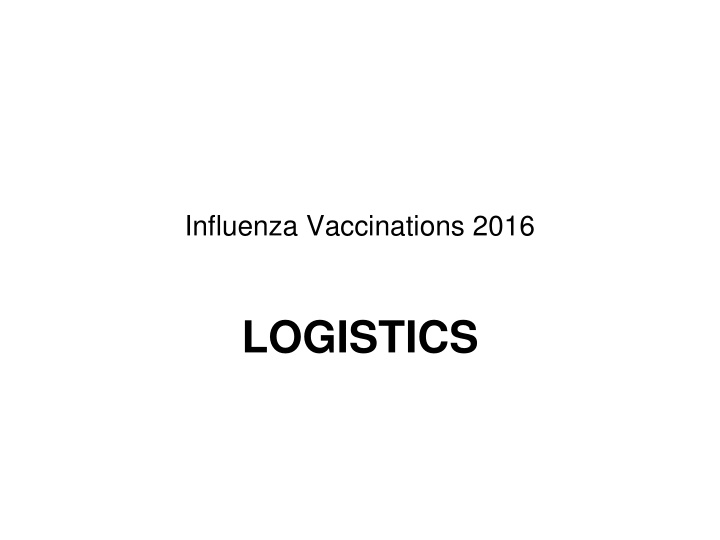

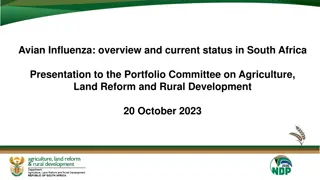
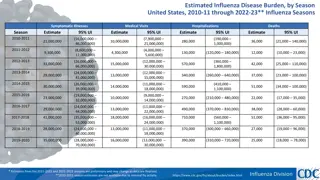


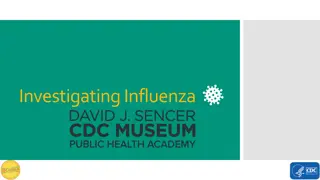
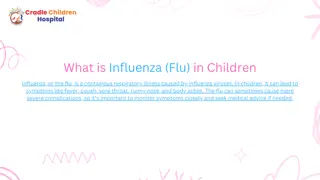


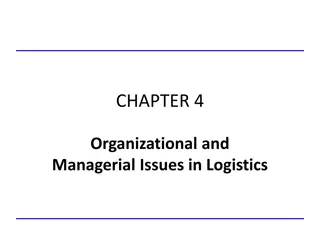

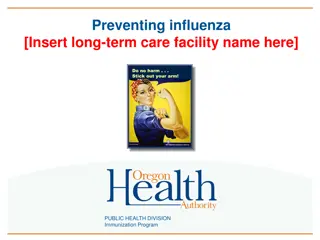



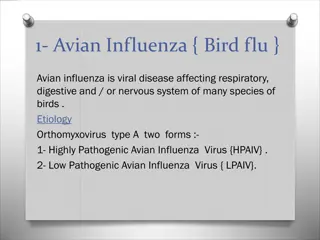
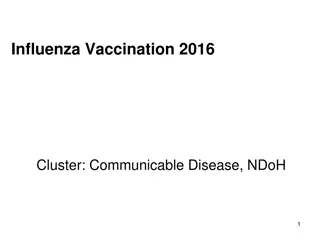
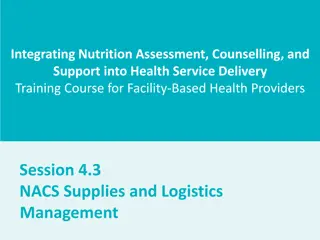


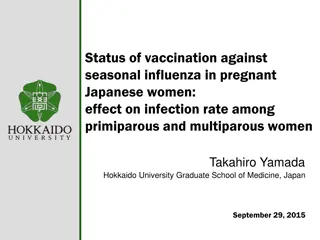
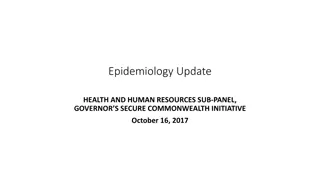
![Preventing Influenza at [Name of Critical Access Hospital]](/thumb/233818/preventing-influenza-at-name-of-critical-access-hospital.jpg)